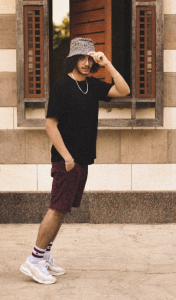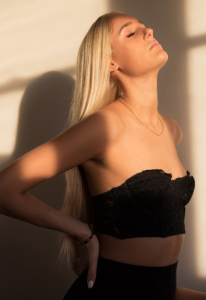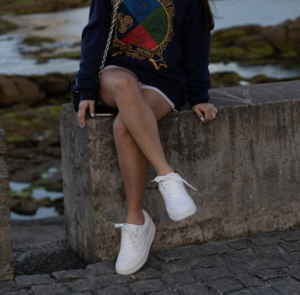Casual vs. Formal: Navigating Men’s Fashion for Any Occasion
1. Introduction
When it comes to men’s fashion, understanding the difference between casual and formal wear is key to dressing well for any occasion. Whether you’re heading to a laid-back weekend get-together or a high-stakes business meeting, knowing what to wear and when to wear it can make or break your appearance.
2. Understanding Men’s Fashion Basics
Men’s fashion is not just about wearing clothes; it’s an expression of personality, confidence, and occasion-appropriateness. But how do you know when to go casual or step it up to formal?
3. What is Casual Wear?
Casual wear refers to clothing that is comfortable, relaxed, and suitable for informal settings. It’s perfect for daily activities, meeting friends, or weekend outings. Casual attire prioritizes comfort but should still be stylish.
4. Key Elements of Casual Wear
- T-shirts and Polos: A classic staple, t-shirts and polos provide a relaxed yet stylish look. Whether plain, graphic, or striped, they’re versatile enough for any casual outing.
- Jeans and Chinos: These are go-to options for bottoms. Jeans offer a rugged, timeless look, while chinos add a touch of polish without losing comfort.
- Sneakers and Loafers: Footwear can make or break a casual outfit. Sneakers offer a sporty vibe, while loafers provide a more refined touch.
5. What is Formal Wear?
Formal wear, on the other hand, is designed for professional, ceremonial, or high-end social events. This attire exudes sophistication and follows specific dress codes to reflect respect and elegance.

6. Key Elements of Formal Wear
- Suits and Blazers: The backbone of formal fashion. Tailored suits and blazers are essential for creating a sharp, professional look.
- Dress Shirts: Crisp, well-fitted dress shirts are a must. They are usually white or light-colored and paired with a tie or bowtie.
- Dress Shoes: Oxford shoes, derbies, or loafers are staples in formal wear. They add the final touch of sophistication.
7. The Core Differences Between Casual and Formal Wear
- Fabric and Material: Casual wear often utilizes materials like cotton, denim, and synthetic blends, while formal attire is typically made from higher-quality fabrics such as wool, silk, or linen.
- Color and Patterns: Casual clothing can experiment with bold colors and patterns, whereas formal wear sticks to classic shades like black, navy, and grey.
- Accessories: In casual settings, accessories like caps, beaded bracelets, and casual watches are common. Formal occasions require more sophisticated choices, such as cufflinks, ties, and classic watches.
8. Dressing for Specific Occasions
- Casual Gatherings: Opt for a pair of well-fitted jeans, a t-shirt or polo, and stylish sneakers.
- Business Meetings: A smart blazer paired with chinos and loafers can strike the right balance between casual and formal.
- Formal Events and Weddings: A tailored suit with a matching tie or bowtie, and polished dress shoes, is the way to go.
9. Mixing Casual and Formal: The Smart-Casual Style
Smart-casual bridges the gap between laid-back and professional. Think of wearing a blazer over a t-shirt, combined with chinos and loafers. This style works well for semi-formal gatherings or business-casual workplaces.
10. Essential Fashion Tips for Men
- Fit and Comfort: Always choose clothing that fits well. Baggy or overly tight clothing can ruin the overall look.
- Choosing the Right Footwear: Ensure your shoes align with the occasion. Sneakers for casual, loafers for semi-casual, and dress shoes for formal.
11. Common Mistakes to Avoid
One common fashion blunder is wearing formal shoes with a casual outfit or pairing a t-shirt with formal trousers. Consistency in style is key to looking polished.
12. How to Transition Between Casual and Formal
Transitioning between casual and formal is easier than you think. A well-fitted blazer can instantly elevate a casual outfit to a semi-formal level, while removing a tie or swapping dress shoes for loafers can tone down a formal look.
13. Building a Versatile Wardrobe
A versatile wardrobe includes essentials like well-fitted jeans, neutral t-shirts, a classic navy blazer, a tailored suit, and dress shoes. This ensures you’re prepared for both casual and formal occasions.
14. Trends in Men’s Fashion
- Modern Takes on Casual: Streetwear has become a major influence, integrating graphic tees, joggers, and statement sneakers.
- Innovations in Formal Attire: Modern suits now come with stretchable fabrics, making them more comfortable without losing their formal appeal.
15. Conclusion
Mastering the balance between casual and formal wear can significantly elevate your fashion game. With the right understanding and a versatile wardrobe, you’ll be ready for any occasion, making style an effortless part of your day.













Post Comment